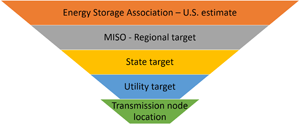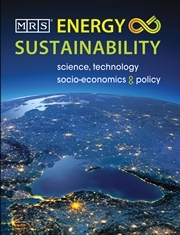No CrossRef data available.
Article contents
A suggested approach to site storage resources in transmission planning models
Published online by Cambridge University Press: 10 September 2020
Abstract

Placing a large storage project at one transmission node influences the transmission flows in the model. Hence, planners need an approach that estimates future storage services and logically places storage at multiple transmission nodes.
In planning models, it is hard to forecast which service storage might provide at any given hour because storage provides a wide variety of services such as capacity benefit, peaker replacement, reduction in renewable energy curtailment, and ancillary services. But transmission planning models are required to address North American Electric Reliability Corporation (NERC) reliability standards and criteria, with assumptions for planned additions of generation, transmission, and demand response resources. Hence, planners must assume a basic set of services for storage resources.
And this paper outlines a suggested approach to site storage resources in planning models by focusing on the generator interconnection queue for utility-scale storage and energy-intensive industries for commercial and industrial customers.
Information
- Type
- Perspective
- Information
- Copyright
- Copyright © The Author, 2020, published on behalf of Materials Research Society by Cambridge University Press


